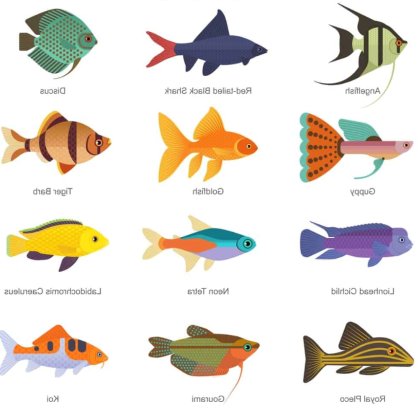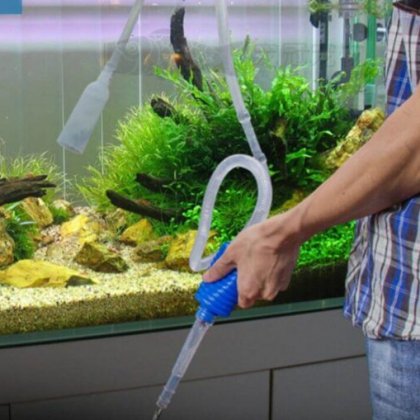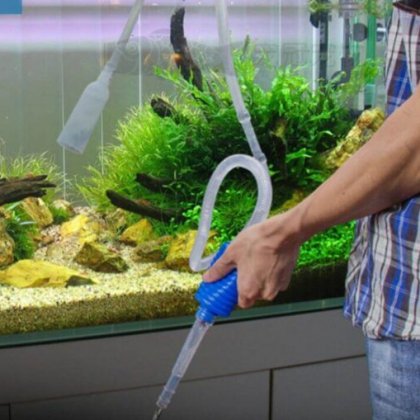|
Quick Facts :: Silver Arowana |
|
|
Care Level: |
Expert |
|
Temperament: |
Aggressive |
|
Maximum Size: |
40" |
|
Minimum Tank Size: |
240 Gallons |
|
Water Conditions: |
78-85° F, pH 4.5-6.8, KH 2-4 |
|
Diet: |
Carnivore |
|
Origin: |
Amazon Basin, South America |
|
Family: |
Osteoglossidae |
|
Species: |
Arowana |
|
Aquarium Type: |
Cichlid-New-World |
Silver Arowana Aquarium Care, Feeding and Native Habitat Information
Native Habitat and Species Information
Native to both black and white water floodplains of the Amazon drainage basin in South America, the Silver Arowana can usually be found thriving in still to calm, acidic waters with plenty of vegetation. They are large, highly evolved, powerful predators and can be traced back over 150 million years without many changes (earning them the title, "living fossil"). Silver Arowana are also referred to as the "water-monkey", due to their unique predatory behavior; in addition to preying on smaller fish and invertebrates in the water, they will hide, stalk, and jump out of the water to ambush insects, birds, frogs, and small animals and amphibians that happen to be passing by or resting on an overhanging branch or nearby vegetation (adults can leap as high as 6 feet into the air). Silver Arowana are available at most fish stores and are extremely popular with the more experienced to expert hobbyists due to their "fossil" status, beautiful and unique appearance, swimming habits, and the fact that they are a true "bony tongue" species (not to mention their massive adult size and rapid growth rate). They are a long, flat, ray-finned (Actinopterygii) species with large eyes (offering them great hunting accuracy), a silvery, stream-lined body with large scales (can have pink and greenish hues), and beautiful, tapered fins that can have a pinkish hue. As evolved predators, Silver Arowana have large, oblique mouths lined with small teeth rooted in their oral bones which include their jaws, tongue, pharynx and palate; they also possess forked barbels on the tip of their bottom jaw used for sensing disturbances on the water surface. This amazing species can also obtain oxygen from air by drawing it into their swim bladder, which is lined with capillaries similar to those found in lung tissue. They are an exciting species that are constantly swimming around the aquarium, providing plenty of action and enjoyment (and they can live for 20 years!).
Aquarium Care
Silver Arowana require an aquarium of at least 240 gallons (300+ gallons with at least 30 inches in width is recommended) and should be provided with a sand or gravel substrate along with driftwood (the tannins in the driftwood will keep the pH lower to help simulate blackwater conditions) and vegetation. They will also require a secure, enclosed top (weighted down depending on the size of the specimen) on their aquarium as they are powerful and notorious jumpers. 25% water changes (RO water is recommended) should be carried out every week (more or less frequently, depending on aquarium filtration efficiency). Silver Arowana are not bullies or very aggressive, but as adults they can sometimes be aggressive towards their own species; they will eat any live fish they can fit in their massive jaws (although they tend to refrain from eating plecos) and tank mates should be considered accordingly. They have been known to do very will with Lima Shovelnose catfish, large Oscars and other large South American species, but can be harassed by large Pike Cichlids if the aquarium doesn't provide enough space. The Osteoglossidae family arguably contains the hardiest freshwater fish species' once past the juvenile stage (their first few months), which don't often get sick, although they grow to be very large and become big and messy eaters and can eventually develop health problems if their water chemistry is not properly maintained.
Feeding & Nutrition
Silver Arowana are carnivores and are not picky; they should be provided with a variety of meaty and vitamin enriched foods such as live, frozen or freeze-dried ghost shrimp, krill, minnows, bloodworms, blackworms, mealworms, earthworms, crickets, frogs, crayfish, and Cichlid/Arowana pellets or sticks. Floating foods are mainly recommended to prevent "drop-eye" (believed to be caused by a combination of fatty food and specimens constantly looking down for their food), which seems to be the most common ailment of Silver Arowana.
Breeding Information
Although breeding is extremely rare in captivity (reported in 1000+ gallon tanks with simulated seasonal conditions), Silver Arowana are brood caring, egg-layers; at the beginning of the flood season, they will pair up and build a circular nest in the mud of the floodplains where the female will lay a small amount of eggs. Once fertilized, the male will store and protect the eggs/fry in his mouth until the juveniles yolk sacs have been fully absorbed (around 2 months).
No reviews found!

















































No comments found for this product. Be the first to comment!